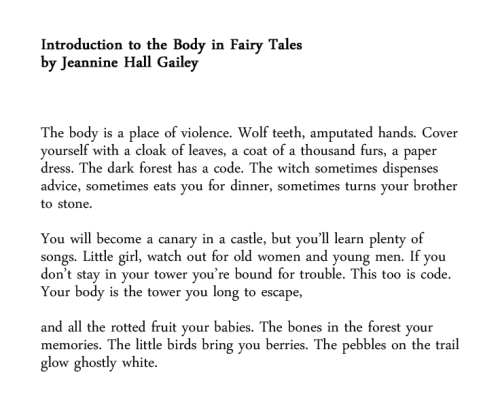Theidlerhour - Bricolage Brain

More Posts from Theidlerhour and Others
calculus gothic
-epsilon is negative. epsilon has always been negative. no matter how you struggle, epsilon will stay negative.
-you must write +C at the end of every communication with the entity feeding upon your work. you change your last name to +C, vainly praying that this will appease their ferocious appetite. It does not. +C
-dy/dx is a fraction. dy/dx isn’t a fraction. you can never know when it is. you can never know when it isn’t. it is always there. laughing. it owns a cat. a black cat. she sleeps in a box. plotting.
-there are parts everywhere. dismembered functions lying prone on cold white pages. you are told to integrate by them. everything only gets worse. more parts appear. then more. and more.





The fear of being found, Greg Ponthus

I was laughing so hard that’s why it’s so blurry, but I still kind of like it? I miss these guys and our late night adventures.
calculus gothic
-The limits keep getting farther and farther away. Where are they going? Where did they start? Will they ever stop?
-The unit circle tells us to bow before it. All hail the unit circle. All hail.
-You have been scribbling the integral symbol and the summation symbol for so long. You can’t write 3′s or capital S’s normally anymore. It is a reflex, muscle memory.
-Piles of math homework surround you as you become a machine, cranking out more math problems as you hone your skills. You build your own castle out of math homework. It is never-ending.
-Trigonometry rids us of our sins. and cosines. and tangents.
I’m permitted to use terms like ‘clearly,’ 'obviously,’ 'it is self-evident,’ and 'it can be shown’ and skip over vast quantities of information to leave you wondering how it is 'clearly’ the case.
Physical chemistry professor (via mathprofessorquotes)

Schrodinger’s Bears
Imagine a droplet sitting on a rigid surface spontaneously bouncing up and then continuing to bounce higher after each impact, as if it were on a trampoline. It sounds impossible, but it’s not. There are two key features to making such a trampolining droplet–one is a superhydrophobic surface covered in an array of tiny micropillars and the other is very low air pressure. The low-pressure, low-humidity air around the droplet causes it to vaporize. Inside the micropillar array, this vapor can get trapped by viscosity instead of draining away. The result is an overpressurization beneath the droplet that, if it overcomes the drop’s adhesion, will cause it to leap upward. For more, check out the original research paper or the coverage at Chemistry World. (Video credit and submission: T. Schutzius et al.)

Mt. Fuji and Sekiyadojo castle at dusk, Chiba, Japan via GANREF
-
 indigotyou liked this · 4 years ago
indigotyou liked this · 4 years ago -
 pasteleriasilvestre liked this · 5 years ago
pasteleriasilvestre liked this · 5 years ago -
 kittensmenow-blog liked this · 6 years ago
kittensmenow-blog liked this · 6 years ago -
 ganjapro-blog1 reblogged this · 6 years ago
ganjapro-blog1 reblogged this · 6 years ago -
 captain1nana reblogged this · 6 years ago
captain1nana reblogged this · 6 years ago -
 airbenderedacted liked this · 6 years ago
airbenderedacted liked this · 6 years ago -
 chop-chop-pufferfish-blog liked this · 7 years ago
chop-chop-pufferfish-blog liked this · 7 years ago -
 vulcangoth reblogged this · 7 years ago
vulcangoth reblogged this · 7 years ago -
 howstrangethemusicsoundstome reblogged this · 7 years ago
howstrangethemusicsoundstome reblogged this · 7 years ago -
 howstrangethemusicsoundstome liked this · 7 years ago
howstrangethemusicsoundstome liked this · 7 years ago -
 carriefisher2 liked this · 7 years ago
carriefisher2 liked this · 7 years ago -
 musiccontrolsmymood reblogged this · 7 years ago
musiccontrolsmymood reblogged this · 7 years ago -
 dejavulgo reblogged this · 7 years ago
dejavulgo reblogged this · 7 years ago -
 sinal-azul reblogged this · 7 years ago
sinal-azul reblogged this · 7 years ago -
 strawburryboba liked this · 8 years ago
strawburryboba liked this · 8 years ago -
 liluzis liked this · 8 years ago
liluzis liked this · 8 years ago -
 bruhdeci liked this · 8 years ago
bruhdeci liked this · 8 years ago -
 dolshae reblogged this · 8 years ago
dolshae reblogged this · 8 years ago -
 dolshae liked this · 8 years ago
dolshae liked this · 8 years ago -
 meleesuh liked this · 8 years ago
meleesuh liked this · 8 years ago -
 xmxxzx liked this · 8 years ago
xmxxzx liked this · 8 years ago -
 umagarotaperigosa reblogged this · 8 years ago
umagarotaperigosa reblogged this · 8 years ago -
 cosmicbeautygalaxy-blog liked this · 8 years ago
cosmicbeautygalaxy-blog liked this · 8 years ago -
 retrograde-tonic liked this · 8 years ago
retrograde-tonic liked this · 8 years ago -
 gemini-system reblogged this · 8 years ago
gemini-system reblogged this · 8 years ago -
 aamukahvilla reblogged this · 8 years ago
aamukahvilla reblogged this · 8 years ago -
 tothedevil reblogged this · 8 years ago
tothedevil reblogged this · 8 years ago -
 fairy-skies reblogged this · 8 years ago
fairy-skies reblogged this · 8 years ago -
 faiiled reblogged this · 8 years ago
faiiled reblogged this · 8 years ago -
 inthe-garage liked this · 8 years ago
inthe-garage liked this · 8 years ago -
 honeygi reblogged this · 8 years ago
honeygi reblogged this · 8 years ago -
 anchorsand liked this · 8 years ago
anchorsand liked this · 8 years ago -
 nonconformist-doll reblogged this · 8 years ago
nonconformist-doll reblogged this · 8 years ago -
 afailedjoke-blog liked this · 8 years ago
afailedjoke-blog liked this · 8 years ago -
 lithuanias reblogged this · 8 years ago
lithuanias reblogged this · 8 years ago -
 bigthanglong1 reblogged this · 8 years ago
bigthanglong1 reblogged this · 8 years ago -
 bigthanglong1 liked this · 8 years ago
bigthanglong1 liked this · 8 years ago -
 browneyez420 liked this · 8 years ago
browneyez420 liked this · 8 years ago
"To awaken my spirit through hard work and dedicate my life to knowledge... What do you seek?"
229 posts

